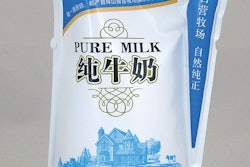If you monitor legal developments over many years, you see, every once in a while, a development that seems to contradict, rather than complete, a previous trend. The ongoing development of “front-of-pack” labeling programs is an example of such a contradiction. The explanation for it may lie in the emergence of obesity as a public health concern.
The recent headlines tell us that some in the food industry have already started using such programs, even as the Food and Drug Administration is attempting to work up its own program. But to see this as a contradiction of past trends, you have to revisit the history of the Nutrition Labeling and Education Act of 1990, or NLEA.
Most food label observers know that it was the NLEA and its implementing regulations that gave us the familiar Nutrition Facts box on packaged foods, and laid out the framework that first allowed foods to make disease-related health claims on their labeling, as well as claims about nutrient content. The law emerged after nutrition science had solidified a variety of connections between diet and health, and that science was the bedrock beneath these developments. The various new features on food labels provided for by NLEA were Congress’ attempt to provide consumers with much more information than previously required, and to take advantage of the emerging knowledge to allow consumers to cobble together a more healthful diet, or to avoid, for example, fat, sodium, or calories, or at least monitor their intake. So NLEA tried to standardize serving sizes, which in turn were used as the basis to present nutrition information about a specified list of food components and contents, and rules were put in place to allow but also standardize health claims and claims about a food’s content of one or more nutrients.
As part of the debate over implementation of that law, you could often hear industry advocates cautioning that we should not end up with rules that make some foods look simply “bad” or simply “good.” Virtually all foods have some nutritional value, though obviously some have more than others, but a commonly expressed view was, “let’s not oversimplify the messages.” This food is high in calories, but also high in protein. That food has fiber, but also some fat and cholesterol. The other food might have a lot of sugar, but at least it has no fat. The theme was, present consumers with a large volume of information so that the full complexity of a food’s characteristics would be revealed. The theme was reflected in the fact that the law required that when health claims were made for foods—for example, This food contains X, which helps prevent disease Y—the wording on the label needs to be clear that the food should be thought of as part of an overall diet. Also, the Nutrition Facts panel itself is required to be packed with details about a food’s calories and content of fat, sodium, cholesterol, carbs, fiber, sugar, protein, and some vitamins and minerals. Label features that oversimplify, went the argument, might be a disservice to consumers and unfair to the food’s makers.
So, if back in the early 90’s with the onset of the NLEA, the emphasis was on complex new sets of information, now the emphasis is on simplification. Front-of-pack label concepts call for summaries of key nutrition characteristics, not masses of detail. Not only is this an abbreviated set of selected information, but it is on the front of the package rather than on the side or back within the Nutrition Facts.
Industry, through the Grocery Manufacturers Association and Food Marketing Institute, has implemented its own program, even as FDA is in the process of working up recommendations for such a program that could appear soon.
The industry groups’ “Nutrition Keys” program calls for listing, in a distinctive set of rounded rectangular symbols, a food’s calories, saturated fat, sodium, and total sugars, both in terms of actual quantities and percentage of Daily Value. The Keys could also include information about ‘nutrients to encourage,’ including some vitamins and minerals and protein.
The change in emphasis has been inspired primarily by industry’s desire to enhance the fight against obesity. GMA said in a release that “To appeal to busy consumers, the information will be presented in a fact-based, simple and easy-to-use format.” GMA notes that the effort helps empower consumers to choose a healthy diet, and is consistent with industry efforts to develop more healthful food choices and other measures.
GMA and IFT evidently feel strongly enough about the need for such programs that they aren’t waiting to see what FDA calls for in terms of front-of-pack programs.
The agency has said it will be proposing something soon, and the government’s Institute of Medicine has recommended that any such program be simple; interpretive (presenting guidance rather than raw facts); ‘ordinal,’ using scales or rankings; and supported by names or symbols that make the messages easy to remember.
Now, it’s also true that an industry program called Smart Choices was tried but then quickly dropped in 2009, so it remains to be seen if the new program has more staying power.
But what’s already clear is that, when it comes to food labels, simplified messages are replacing dense sets of data as the weapon of choice in getting consumers the information they need.


























